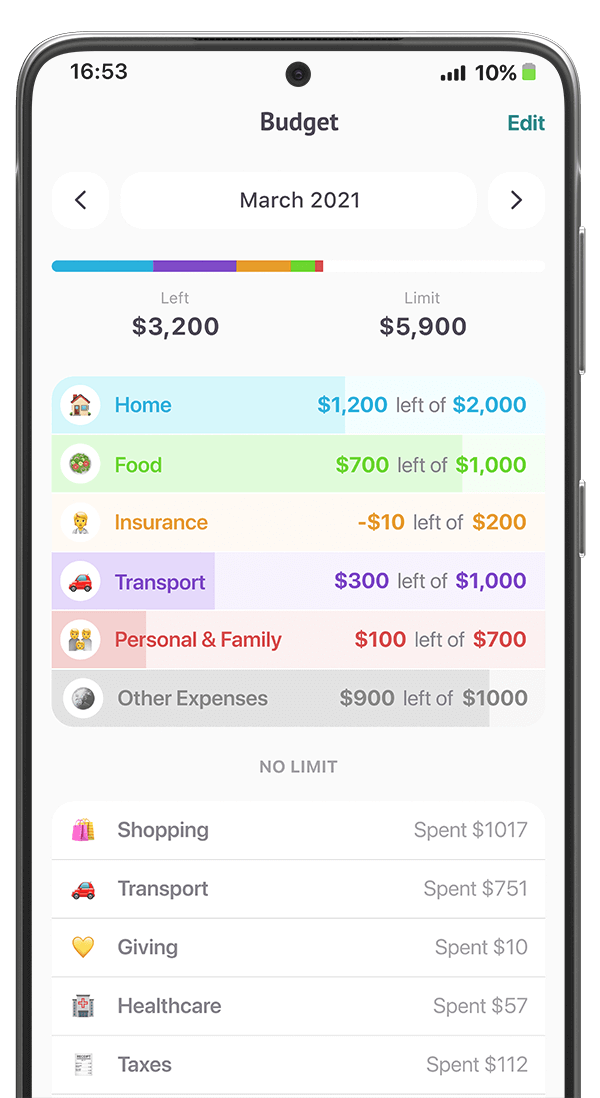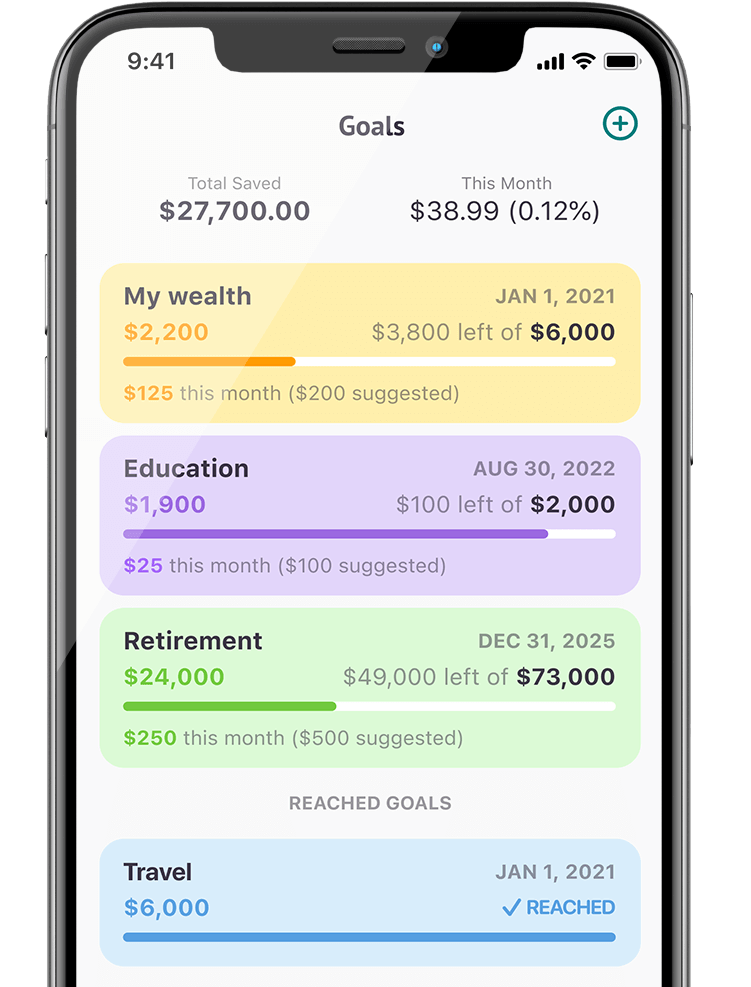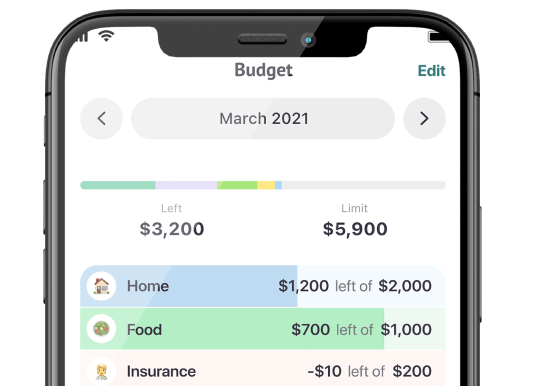Life is full of surprises. Expensive surprises. You might not know when you’ll lose your job, run into car problems, or need to pay a pricey medical bill, but the possibility is always there! Keeping an emergency stash of money especially for out-of-the-blue expenses can keep your savings on track and, even better, fend off the financial stresses of a high-interest personal loan or credit card balance.
If you’re not sure if you need an emergency fund, well, you probably do. A Bankrate survey found that only 41% of Americans surveyed would cover an unexpected $1,000 expense using savings, while 37% said they would borrow money. Given that the average unanticipated expense tends to be between $2000 and $3,500 (according to Pew and Bankrate respectively), though, a real emergency could end up wiping out quite a few people. According to Pew, 60% of households had experienced a financial shock in the 12 months before the survey, and 50% of them struggled to make ends meet after the most expensive shocks hit.
So, if you had to pay your bills for a month with no income, would you be able to? How about three months? Six months? If that question makes you a little uncomfortable, it’s probably time to think about putting together a solid emergency fund!
Where to Keep Your Emergency Fund

You should be able to access your emergency fund quickly in case you really need the cash, but it probably shouldn’t be as easy as spending the money in your checking account. That’s why a savings account—preferably one that’s separate from your primary savings account—is probably best.
Savings accounts are easy to access—you can just transfer money to your checking account or withdraw money from a bank and/or ATM, depending on the account. However, it’s typically limited to six withdrawals per month, so you won’t be too tempted to use it for everyday spending. Plus, if you get a high-yield account you can potentially earn at least some interest on your money.
You can keep your emergency funds wherever you choose of course—just keep in mind that the accounts should be liquid, easy to access, and at least a bit separate from your other money.
How Much Should I Save?
Most financial experts say you should have 3-6 months of expenses saved up for emergencies, and that’s a great rule of thumb to follow if you prefer to keep it simple. There are a few other factors to consider if you’re serious about preparing for all possible eventualities, though.
Minimum or All Monthly Expenses?
“Monthly Expenses” can include a lot of things you don’t really need to survive, like eating at restaurants, going to shows, buying clothes, recreational travel, etc. If you want to keep up some or all of those things, you should be sure to include them in your estimate.
Alternatively, you could just look at the minimum you need to spend on necessities, like housing, food, utilities, transportation, etc., and use that as your base monthly figure.
The first option, which accounts for even your unnecessary monthly expenses, is the safer option—especially if your issue isn’t job loss, but some other type of financial shock. Also, think about what “future you” would do—if you lost your job, would it be easy for you to also give up spending on things you enjoy and stick to a budget? If that would be difficult/stressful, you might not stick to it anyway, and that could mess up not only your budget, but your mental health.
Length of Unemployment
According to research by Randstad, the average length of a job search in the U.S is around five months. However, this can vary dramatically depending on a lot of factors. If you’re a young, educated mid-level worker in a location with a high concentration of jobs in your industry, you can probably find a new job within a few weeks. If you’re less well-situated, you could be looking at months or more of hunting.
Either way, it’s better to have too much in your emergency fund rather than too little, so use the factors below to estimate how long your job search might take, and decide if your emergency fund should be closer to three months or a year.
Industry
There are a few things to consider when it comes to industry:
- Is it high-demand? Are there typically lots of job openings?
- Is hiring seasonal? Would you have to wait a while before applying/getting a job?
- Is the hiring process long?
For example, waiters can typically go from interview to employment in about 8 days, according to GlassDoor, while university professors take around 60 days on average.
Education/Skills
Depending on your industry, these may or may not matter. In general, though, a lot of jobs have education requirements and, all other things equal, will choose the more highly-educated or skilled candidate. You may even need to spend some time updating your skillset or going back to school to be marketable again.
Location
Thanks to the internet and COVID-19, remote work is becoming more popular and your physical location doesn’t matter as much as it used to. Being located in or willing to relocate to a market where your skills are in demand, though, can give you a real advantage.
Experience
If you’re close to either extreme of the experience spectrum—entry-level or executive—you’ll probably experience longer-than-average job searches, though this also depends on industry and general demand. At the low level, you might have trouble meeting some job requirements, whereas at a higher level you may be competing for fewer positions. More experienced seekers may not even be able to get a mid-level job if they have a lot of experience or qualifications, as they can be seen as overqualified.
Age
According to a study from the National Bureau of Economic Research, job applicants over 40 are half as likely to get job offers as younger applicants if the employers know their age. Whatever the assumptions may be on the part of the employers, the data is clear: it’s harder for an older worker to find employment, so if you’re over 40, assume that your job search will take a bit longer.
How Much is Too Much?
If you’ve calculated that you only need about six months of savings, should you go up to seven? Eight? A year? There’s nothing wrong with having a little extra safety, but the savings account where you keep your emergency fund probably won’t pay much interest, so a larger emergency fund means you’ll be missing out on profits you could be making elsewhere.
For example, let’s say you have expenses of $5,000 a month. You save up $30,000 as a six-month emergency fund. What would happen if you saved another $30,000 to bring your emergency fund up to a year?
In a savings account paying 0.04%, the extra $30,000 you save would turn into $30,120 after ten years. In an investment account averaging 7% returns, that $30,000 could double to around $60,000. That’s not pocket change!
This isn’t to say that you should only save up to six months, though. If you think you need more, you should save more! However, you may also want to keep in mind that six months is probably enough time to transform at least some of your illiquid assets, like investments, CDs, property, etc. into cash. Investing in short-term bond funds, stable index funds, etc. can be a good way to keep your money growing while also ensuring that you have enough to handle an emergency that’s bigger than your primary fund.
Adjusting Your Emergency Fund
Expenses tend to go up over time, and so should your emergency fund! Every time you have a major salary or spending change, it’s a good idea to go back and re-estimate how much you need now. If you built an emergency fund while you were single and working an entry-level job and you now have a mid-level position and a family, you should have definitely increased your savings at several points along the way.
How Much Should You Contribute Per Month?

Let’s say your income is $5,000 a month, your expenses are $4,000 a month, and you save $1,000 a month (20% of your income). If you directed all your savings towards your emergency fund, you’d have a month of expenses built up in just four months. It would take you a year to save three months of expenses, and two years to save six months.
But should you ignore your savings for retirement, education, short-term goals, etc. while you build your fund? It’s probably not practical to just let your other goals grind to a halt for a year or more.
There are two alternative strategies you might want to consider:
- Start small. Begin your journey with a small, easy goal—say $500 or $1000. Once you hit that, gradually save at a rate that allows you to keep up with your other goals until you hit your total goal. If you can, increase your contributions every time you have spare money from a higher income and/or lower expenses. This may take a few years, but it’s a low-impact way to build your fund.
- Go big, then taper down. Channel the maximum possible amount into your emergency fund for a short time—say, a few months—to build up a large sum quickly, then add the rest by saving more gradually.
Depending on which approach you take, you should probably find yourself saving between 5 and 20% per month for emergencies until your fund meets its goal.
When to Build an Emergency Fund
An emergency fund is one of the first savings goals you should have—even before you focus on paying off debts or saving for retirement. It’s essentially a shield for the rest of your money, enabling you to save without disruptions and avoid going into (or accumulating more!) debt.
If you’re carrying high-interest debt, though, it’s often a good idea to build an emergency fund and pay off debt simultaneously, if possible. A smaller emergency fund—say, a few thousand dollars—will still insulate you from major shocks while allowing you to divert most of your funds towards stopping your losses.
Using Your Emergency Fund
The word “emergency” is key here! Emergency funds are for necessary expenses that you wouldn’t be able to cover otherwise. An emergency expense is one that you absolutely need for either:
- Your survival
- Your health
- Your financial future
This includes things like rent, food, medicine, medical procedures, job-related expenses, car repairs, home repairs, etc. If it’s something that you can live without, even if you really want it, you probably shouldn’t use your emergency fund to buy it. Remember that rebuilding the fund will take a lot longer than spending the money.
And that’s the other main point here: make sure to put money back into your emergency fund when the emergency is over! In practice, this might mean making withdrawals once a year or so and replacing that money within the next few months, but everyone’s finances and needs are different, so you’ll have to figure out this cycle for you and adapt to it.
Drawing on Retirement Funds
It’s not advisable, but if you run out of emergency funds for some reason, you actually can use your retirement savings! It will be a little harder to get your hands on this money, as retirement accounts come with rules that make pre-retirement withdrawals difficult, but there are ways to do it.
Roth/Traditional IRAs
If you have a Roth IRA, you’re in luck! This is the easiest retirement account to withdraw from. You’ve already been taxed on the amount you contributed to the IRA, so you can withdraw your contributions without incurring a penalty or paying extra taxes. If your contributions have grown, you’re not allowed to touch the growth, however—withdrawing more than you put in means you’ll have to pay.
If you make an early withdrawal from a traditional IRA, or you want to withdraw earnings from a Roth IRA, you’ll have to pay 10%, plus income taxes, on the money. The exception is if you qualify for a “hardship withdrawal” in one of the following circumstances:
- Paying medical expenses
- Paying health insurance after 12 weeks unemployed
- Up to $10,000 to buy your first home
- Paying for up to 12 months of higher education expenses
- You sign up for something called “substantially equal periodic payments”
Roth/Traditional 401(k)
The quickest option for getting some money out of your 401(k) is to request a loan—if your employer allows it. These do come with some conditions, but since you’re paying the interest back into your own retirement account, it’s relatively cheap and easy.
If you don’t have the option for a 401(k) loan, you may want to try to qualify for a hardship withdrawal. Not all employers allow these, and you may still have to pay a penalty and income taxes, but if your expense falls into one of the following categories, you can make withdrawals that you don’t have to pay back:
- Some medical expenses
- Up to 12 months of higher education tuition and fees
- First-time home purchases (up to $10,000)
- Mortgage/rent if it prevents you from being foreclosed on or evicted
- Repairing damage to your home
- Expenses if you live in a place designated as a disaster area by FEMA
- Burial/funeral expenses
You may be able to avoid the 10% penalty (but not the taxes) if:
- You are permanently disabled
- You have medical debt that is more than 7.5% of your gross adjusted income
- A court order is compelling you to give the money to a divorced spouse, child, or dependent
- You’re a military reservist being called to active duty
- You take a series of substantially equal periodic payments
Some other exemptions can also apply.
Next Steps: Emergency Funds for Your Budget
Once you have a healthy amount in your emergency fund, you’ll be able to focus on your other financial goals more consistently. If budgeting is one of them, you might even consider building another emergency fund that helps keep your budget on track!
Either way, building emergency fund or planning your budget gets easier with Finmatex since you have the all your financial account in one place and have it all clear and transparent.
What’s even more cool is that you can start your 1-week free trial with no commitment or obligations. Finmatex app is available on Android and iOS.











